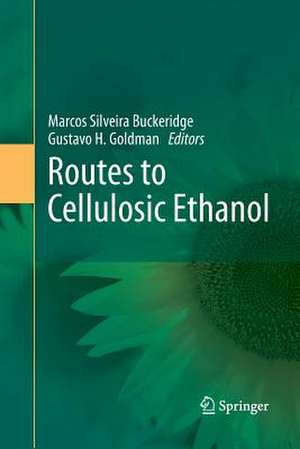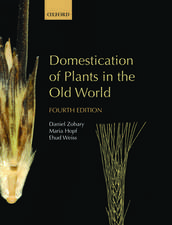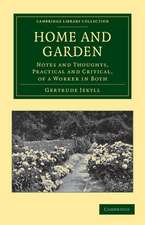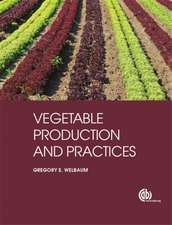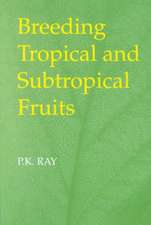Routes to Cellulosic Ethanol
Editat de Marcos Silveira Buckeridge, Gustavo H. Goldmanen Limba Engleză Paperback – sep 2014
| Toate formatele și edițiile | Preț | Express |
|---|---|---|
| Paperback (1) | 943.88 lei 6-8 săpt. | |
| Springer – sep 2014 | 943.88 lei 6-8 săpt. | |
| Hardback (1) | 950.03 lei 6-8 săpt. | |
| Springer – 12 ian 2011 | 950.03 lei 6-8 săpt. |
Preț: 943.88 lei
Preț vechi: 1151.07 lei
-18% Nou
Puncte Express: 1416
Preț estimativ în valută:
180.63€ • 188.35$ • 150.12£
180.63€ • 188.35$ • 150.12£
Carte tipărită la comandă
Livrare economică 21 martie-04 aprilie
Preluare comenzi: 021 569.72.76
Specificații
ISBN-13: 9781489981608
ISBN-10: 1489981608
Pagini: 284
Ilustrații: XII, 270 p.
Dimensiuni: 155 x 235 x 15 mm
Greutate: 0.4 kg
Ediția:2011
Editura: Springer
Colecția Springer
Locul publicării:New York, NY, United States
ISBN-10: 1489981608
Pagini: 284
Ilustrații: XII, 270 p.
Dimensiuni: 155 x 235 x 15 mm
Greutate: 0.4 kg
Ediția:2011
Editura: Springer
Colecția Springer
Locul publicării:New York, NY, United States
Public țintă
ResearchCuprins
Bioenergy.- The role of biomass in the world’s energy system.- BioEnergy and the Sustainable Revolution.- Biomass gasification for ethanol production.- Plant cell walls, enzymes and metabolism.- Hemicelluloses as Recalcitrant Components for Saccharification in Wood.-Topochemistry, porosity and chemical composition affecting enzymatic hydrolysis of lignocellulosic materials.- Enzymology of plant cell wall breakdown: an update.- Enzymes in Bioenergy.- Hydrolases from microorganisms used for degradation of plant cell wall and bioenergy production.- Cellulase Engineering for Biomass Saccarification.- Genetic improvement of xylose utilization by Saccharomyces cerevisiae.- Plant cell wall genetics.- Tropical Maize – Exploiting maize genetic diversity to develop a novel annual crop for lignocellulosic biomass and sugar production.- Sugarcane breeding and selection of sugar cane with higher lignocellulosic ethanol production.- Cell Wall Genomics in the Recombinogenic Moss Physcomitrella patens.
Notă biografică
Marcos S. Buckeridge, is a biologist who worked for more than 20 years with the structure and function of plant cell walls. After many years at the Botanical Garden of São Paulo, he moved to the University of São Paulo where incorporated in his lines of research investigation of sugarcane cell walls and sugarcane physiology. At the same time he founded the Laboratory or Plant Physiological Ecology (LAFIECO) dedicated exclusively to study the effects of the global climate changes on crop and native rain forest species. He will be one of the lead authors of the IPCC report for 2014. Buckeridge helped to found the BioEn-FAPESP, one or the most important research programs in bioenergy in Brazil. More recently he became coordinator of the National Institute of Science and Technology of Bioethanol, and is now the scientific director of the Brazilian Bioethanol Science and Technology National Laboratory (CTBE) at Campinas, Brazil. He is communicating editor for the journals Trees: structure and function, Global Change Biology Bioenergy and Bioenergy Research.Gustavo H. Goldman is a biologist, Professor of Molecular Biology at the Universidade de Sao Paulo, Brazil, Researcher of the Conselho Nacional de Desenvolvimento Cientifico e Tecnologico, Brazil, and a former fellow of the John Simon Guggenheim Foundation, USA. He is also an Associate Researcher at the Brazilian Bioethanol Science and Technology National Laboratory (CTBE) at Campinas, Brazil, and Visiting Professor at the Universidade do Minho, Portugal. His expertise is on the molecular genetics of fungi mainly working on the molecular biology of Aspergilli. Goldman has been working with fungal genomics for many years and has several collaborations with the JCVI and the Brod Institute-MIT, both at USA. He is currently Associate Editor of PLoS One, Fungal Genetics and Biology, and BMC Genomics.
Textul de pe ultima copertă
The perception that civilization is crossing a period of Global Climatic Changes that can seriously threaten our lifestyle, along with energy security and the search for prosperity, are the main drivers that are pushing men to use more biomass as a source of energy. It will be crucial that such intent will include a large parcel of sustainability so that more renewable energy becomes available for populations. Because large amounts of energy are “hidden” in carbon polymers made by plants, notably carbohydrates, it is obvious that if technologies are developed to produce liquid fuels such as ethanol from carbohydrate polymers such as cellulose, men could significantly increase energy sustainability . This book reviews general aspects of biomass utilization for bioenergy production as well as strategies using biochemistry, molecular biology, chemistry and physics to disassemble plant cell walls. Recent discoveries of basic science under development in several laboratories in the world are reviewed by experts that have been intensively working with many aspects that will impact the development of the technology of production of cellulosic ethanol.Marcos S. Buckeridge, is a biologist who worked for more than 20 years with the structure and function of plant cell walls. After many years at the Botanical Garden of São Paulo, he moved to the University of São Paulo where incorporated in his lines of research investigation of sugarcane cell walls and sugarcane physiology. At the same time he founded the Laboratory or Plant Physiological Ecology (LAFIECO) dedicated exclusively to study the effects of the global climate changes on crop and native rain forest species. He will be one of the lead authors of the IPCC report for 2014. Buckeridge helped to found the BioEn-FAPESP, one or the most important research programs in bioenergy in Brazil. More recently he became coordinator of the National Institute of Science and Technology of Bioethanol, and is now the scientificdirector of the Brazilian Bioethanol Science and Technology National Laboratory (CTBE) at Campinas, Brazil. He is communicating editor for the journals Trees: structure and function, Global Change Biology Bioenergy and Bioenergy Research.Gustavo H. Goldman is a biologist, Professor of Molecular Biology at the Universidade de Sao Paulo, Brazil, Researcher of the Conselho Nacional de Desenvolvimento Cientifico e Tecnologico, Brazil, and a former fellow of the John Simon Guggenheim Foundation, USA. He is also an Associate Researcher at the Brazilian Bioethanol Science and Technology National Laboratory (CTBE) at Campinas, Brazil, and Visiting Professor at the Universidade do Minho, Portugal. His expertise is on the molecular genetics of fungi mainly working on the molecular biology of Aspergilli. Goldman has been working with fungal genomics for many years and has several collaborations with the JCVI and the Brod Institute-MIT, both at USA. He is currently Associate Editor of PLoS One, Fungal Genetics and Biology, and BMC Genomics.
Caracteristici
poses important questions on biofuels and the importance for the energy matrix and possible biotechnological routes to obtain energy from cellulose explores obtaining hydrolases from microorganisms This volume deals with the pros and cons of modifying plant genome to improve cellulosic ethanol Includes supplementary material: sn.pub/extras
